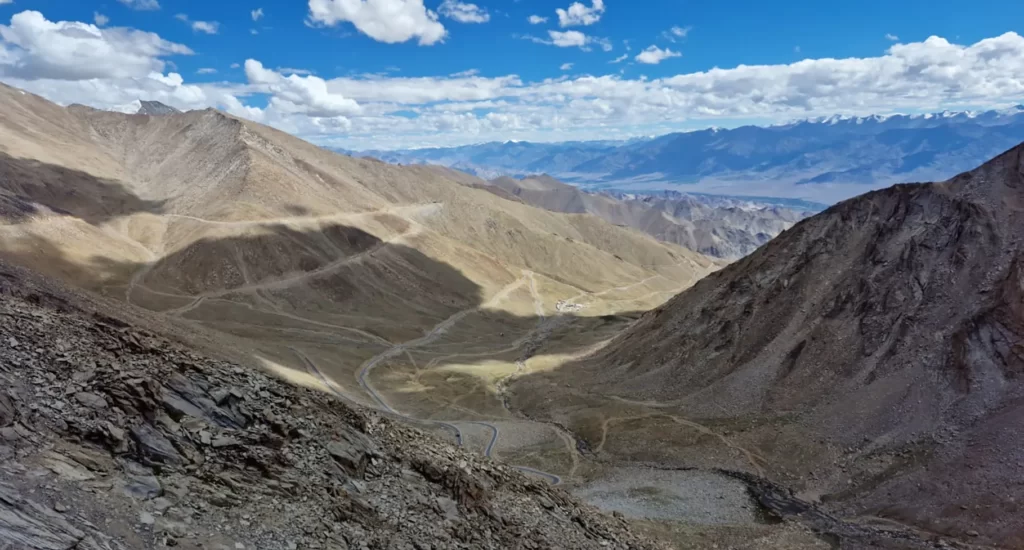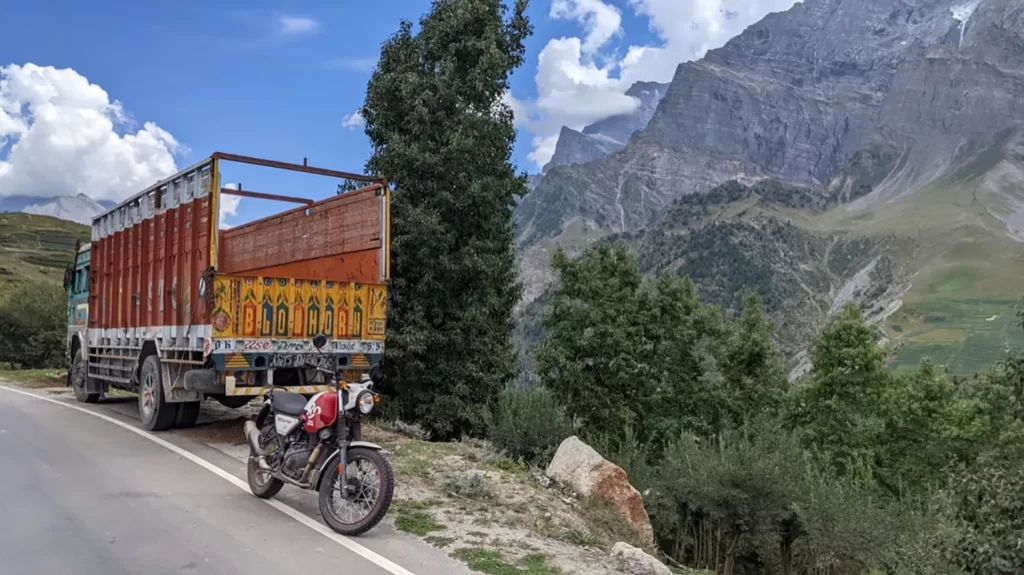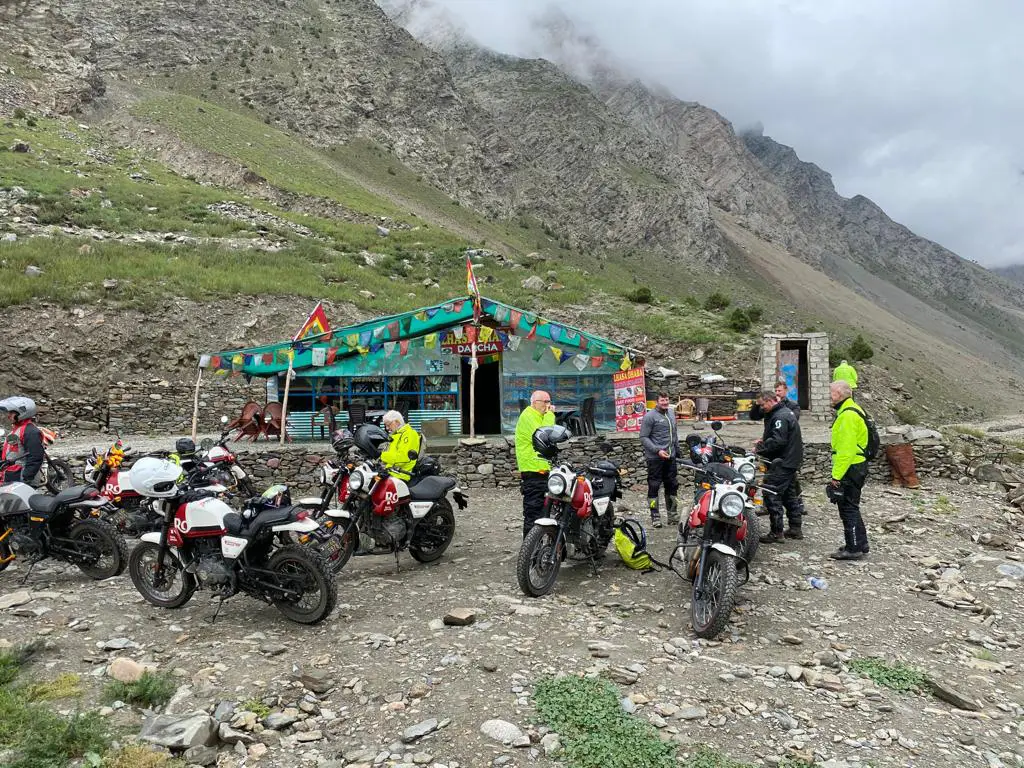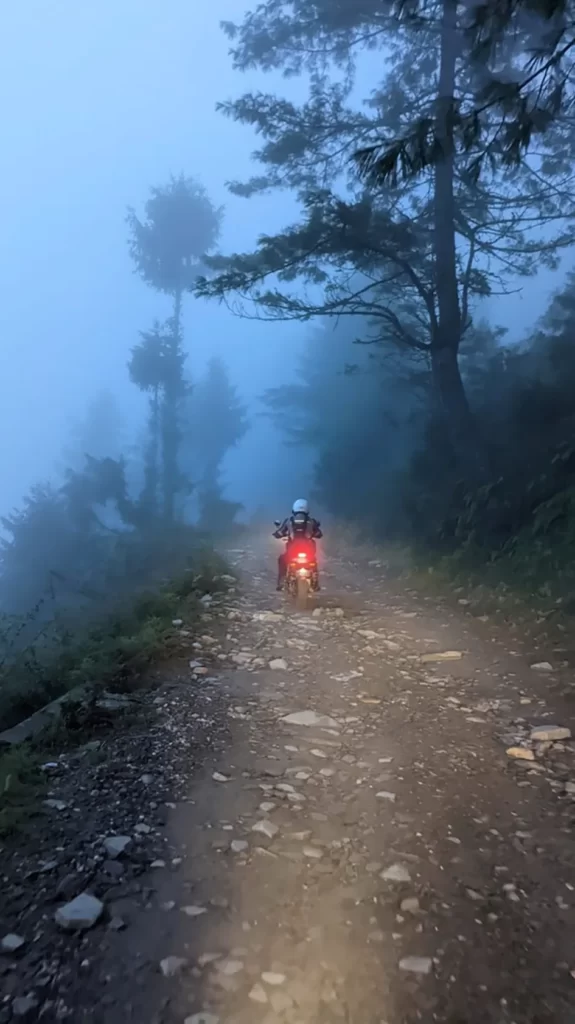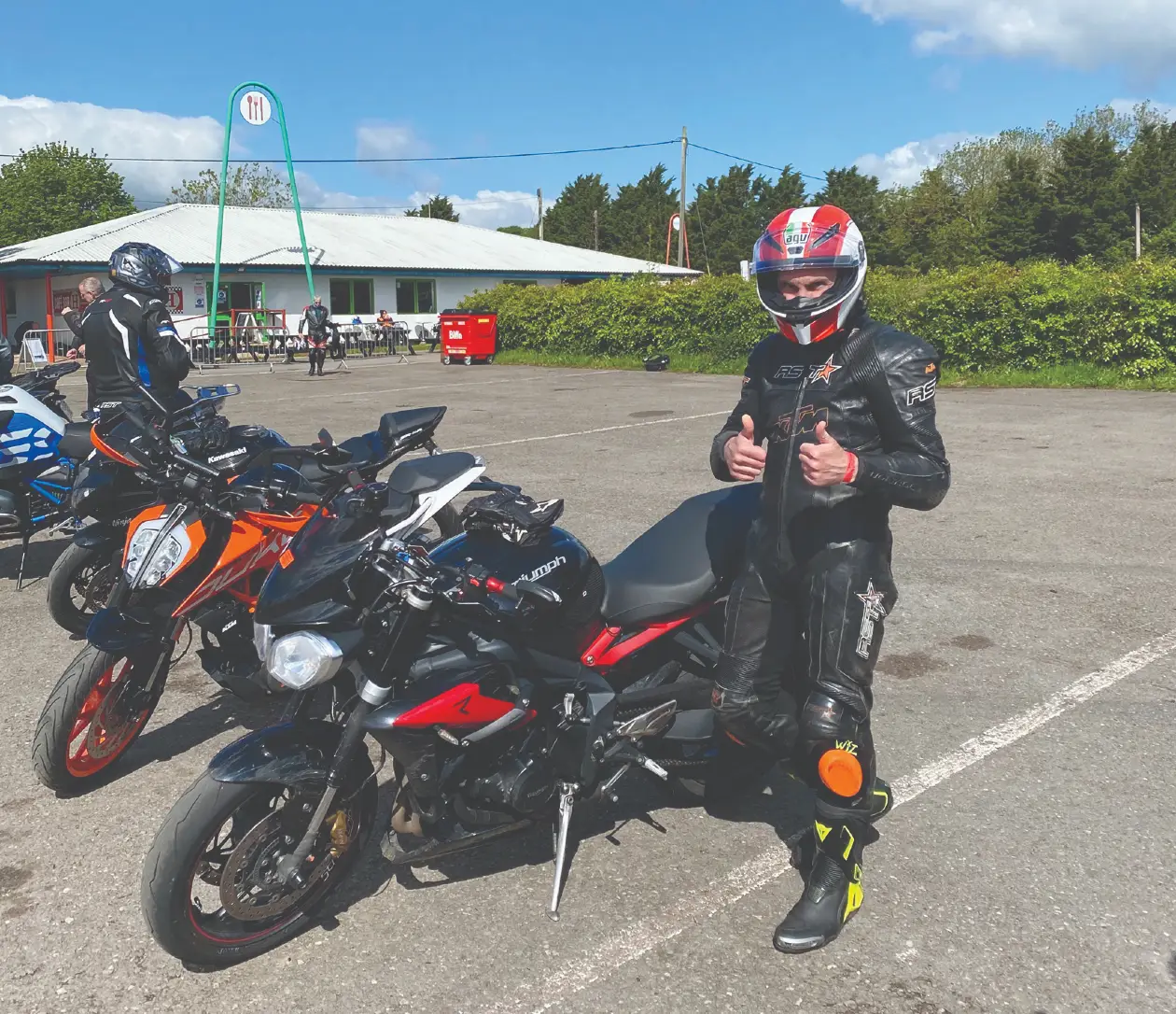Following trips to the Sahara and through the countries at the side of the Adriatic to Athens, where could we go? Back in 2019 we cooked up a plan to go to the Himalayas in 2020. This would be a bit different, in that an organised tour seemed wise after self-organised trips elsewhere.
We settled on a company called Ride Expeditions. They were fantastic, with four members of staff and a support vehicle on the trip and great communication in the COVID years. It seems wimpy in some ways but was great. Bags taken to rooms (or tents), water and snacks provided at breaks, meals and tea stops laid on, bikes mysteriously filled with fuel overnight; and no luggage to carry on the bikes except the day’s water and waterproofs. In emergency you could ride in the support vehicle, all very re-assuring. Really nice people too.
This is the trip: www.rideexpeditions.com/motorcycle-tours/himalayan-heights
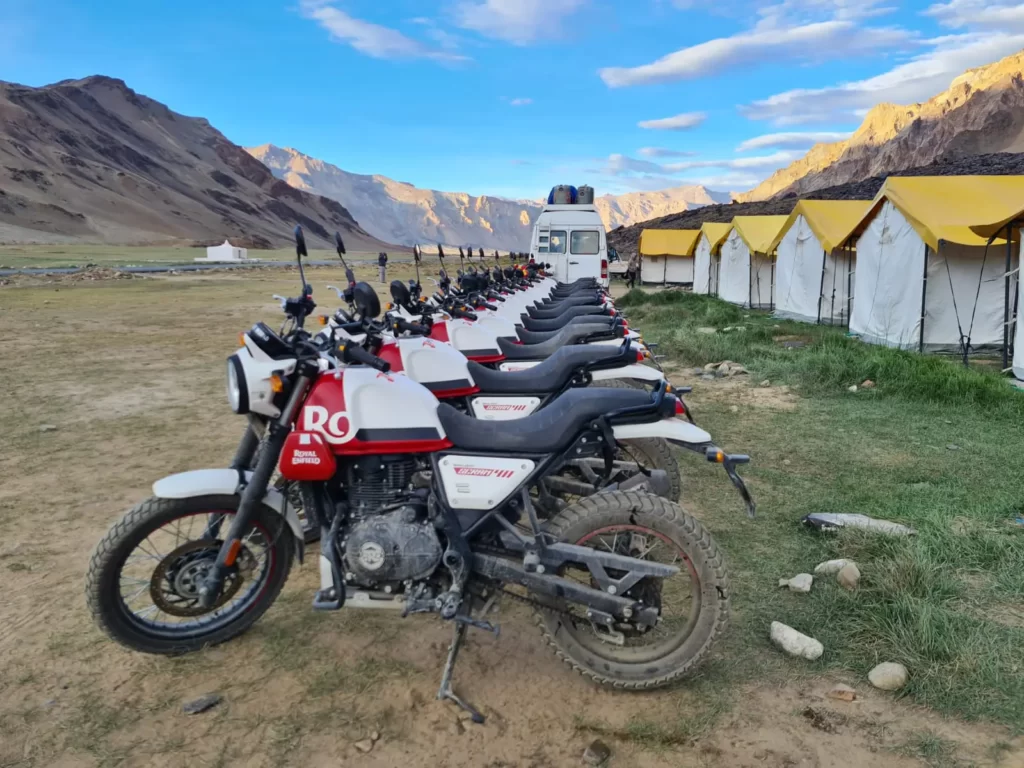
The bikes were Royal Enfields, pretty well compulsory in India for all but urban journeys. This trip was to be on 35% unpaved/65% paved roads, 1410 km. The trip is only possible from mid-July to mid-September between the monsoon season and snow. Leh, a city of 180,000 at the north end of the trip is cut off from the world except by air for six months each year. This is epic stuff.
The group met in Delhi, 11 intrepid adventurers, all riders, no pillions: four from a family, two sisters, three individual travellers (one aged 72) my mate Nigel (Dorset IAM) and me. Broadly half the group had off-road experience and half not. We, from the on-road only contingent, were told we should do some off-road training, be confident to stand for significant distances and know how to instinctively avoid two lorries coming round a blind corner side-by-side. We had one day’s training in Dorset four months before the trip…not enough! Two days seemed to work for other mainly road riders.
After a night amongst the chaos enjoyed by the 29 million Delhi residents, taxis took us to Shimla, the old Empire summer seat of government, where we picked up the Royal Enfield Scramblers, then headed north over eight days or so not far from the Chinese and Pakistan borders.
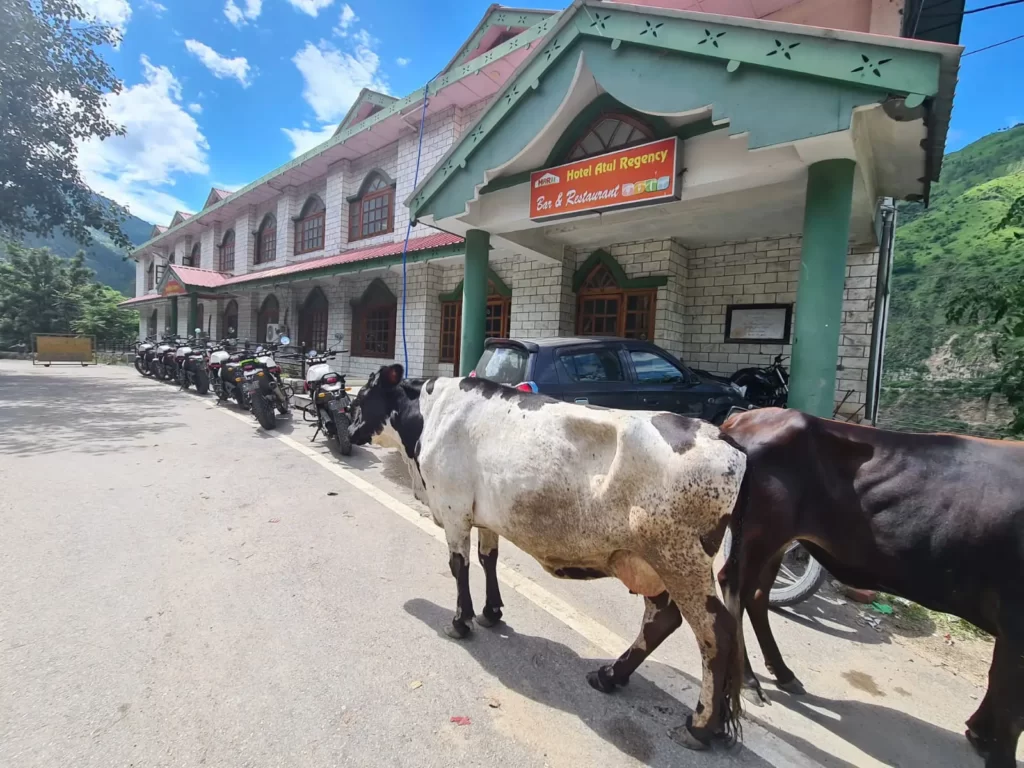
The Himalayas are immense. Wikipedia runs out of “highest mountains in the world” at number 108 and they are all in the Himalayas and associated ranges, like the Hindu Kush and Karakoram. They feel it too. There really are no words or photos that can do it justice. You just drive along in a state of constant breath-taking amazement.
India is a shock to the system. The people are great and welcoming and talk to strangers and try to help. On the other hand the country has great contrasts of wealth with families sleeping on the streets of Delhi alongside swanky western- style hotels. The driving is extraordinary. It’s very rare to see indicators being used, only horns. The use of horns is not an act of aggression, just a reasonable request to move over to allow overtaking. The outcome is an accident rate six times the world average measured against vehicle ownership. We saw loads of accidents and vehicles at the bottom of ravines, despite frequent road safety signs.
It is a scruffy country needing lots of painting and rubbish collection, clearing dumped rubbish from the edges of towns. The dump in Delhi is like a vision of Hell. Whether you like this earthiness and humanity is your choice!
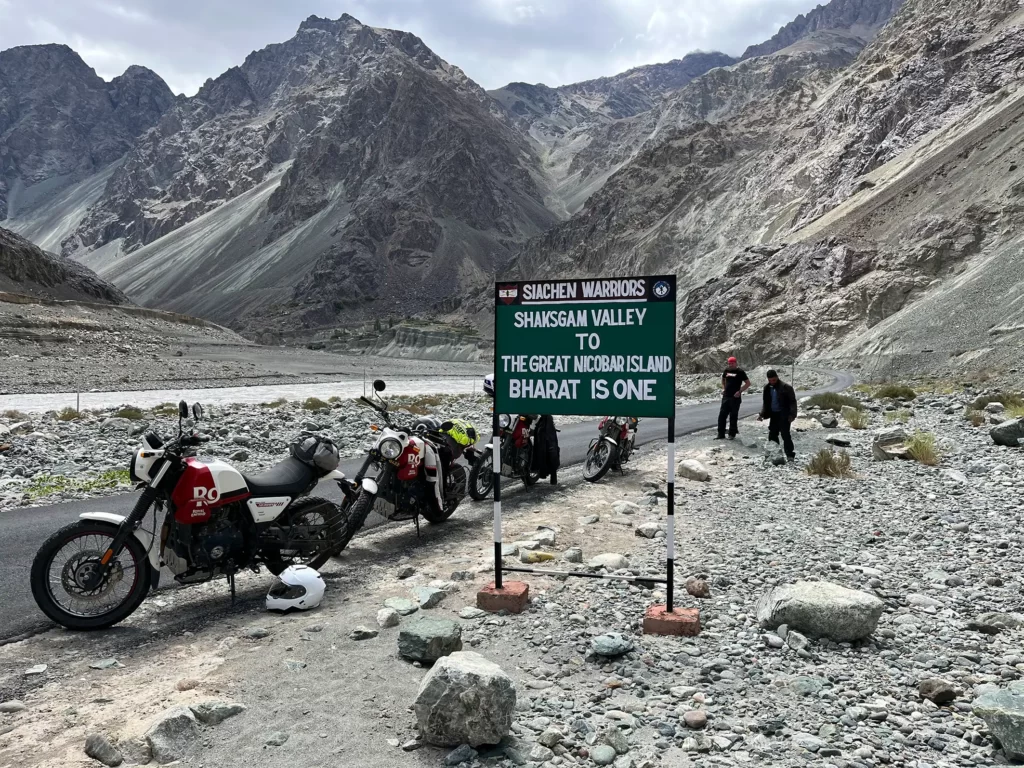
The bikes were great. Didn’t miss a beat and no complaints about the 25hp, less at altitude. Quite easy to pick up when dropped too. It was great riding along with 13 others, including Ride Expeditions run leader and back markers. The enthusiasm was infectious and fantastically supportive.
There are cows in the road, even settled in the fast lane of new dual carriageways, with cars and bikes going the wrong way down dual carriageways if it suits them. Apparently, like in the UK, you are supposed to use the left hand lane on a dual carriageway, but no-one much does.
The IAM emphasis on early anticipation of hazards is vital here, though nothing else we’ve learnt is! One thing the IAM does better is the Marker system. Not much marking to do because of the deep valleys but we had a couple of people going the wrong way, including me doing a private trip up a mountain to an Indian Army base. In one case because one of the group marked more for artistic impact than clarity, we had a dark evening trip down an unmade 15km diversion on day 2. Fairly scary, but we all made it.
In the Himalayas, nature is in charge. Landslips take away significant sections of road. The solution; bulldoze a temporary route through sand, streams, rocks and cross-country. Road building and improvement is carried out in the same way.
We went over four passes at a height of over 5,000m. The top of Ben Nevis is 1,345m. For over a week we were above the altitude sickness risk height of 3,000m. You do have to move about quite carefully but no-one really suffered worse side effects.
The first part of the ride is through heavily vegetated mountains within reach of annual monsoons, the northern part is through stark, unvegetated dramatic scenery with rapidly flowing huge rivers including the Indus flowing to Pakistan and doing immense damage.
The northern part is mainly Buddhist with lots of stupa (prayer towers) temples and monasteries adding to the atmosphere.
The area is highly militarised with threats from China and Pakistan. There are lots of barracks and massive 50-lorry military vehicle convoys slowly grinding over single track, sometimes unmade, passes.
As always, some of the pleasures were social, eating and drinking beer. The whole disparate group got on great and one or two are talking about doing the same trip next year. We stayed in a range of hotels, from basic (but fine) to quite smart and four nights under canvas: one rudimentary (and freezing), one pretty good yurt and the other luxurious Scandi style tents in magical hotel grounds. Lots of curry of course until you become an expert at avoiding three curries a day by about day 8!
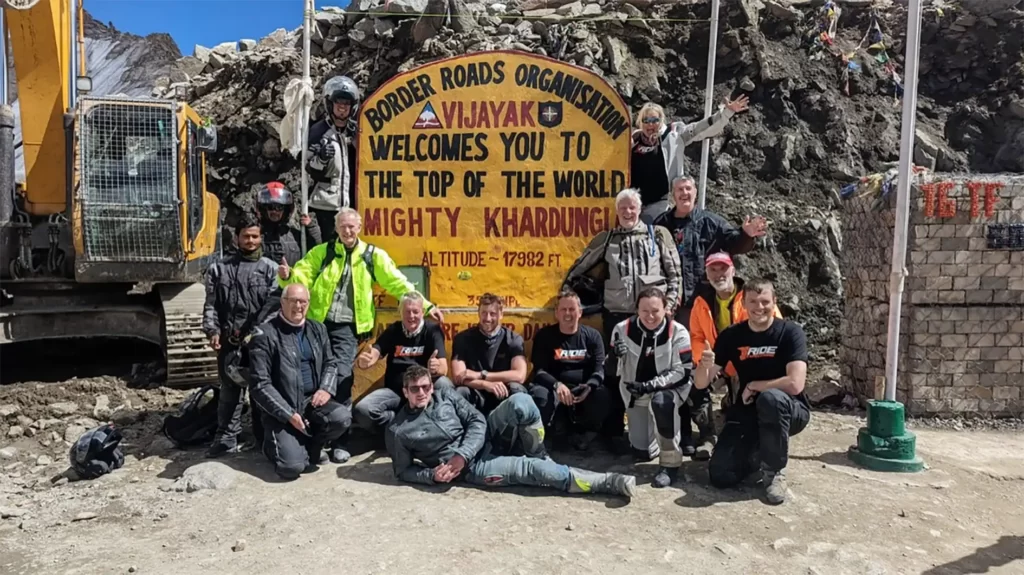
So the best bits: the extraordinary scenery, the challenge of riding through streams, sand, mud and rocky tracks, whilst not hitting other road users, and the camaraderie. The weather helped too; no rain and a nice riding temperature.
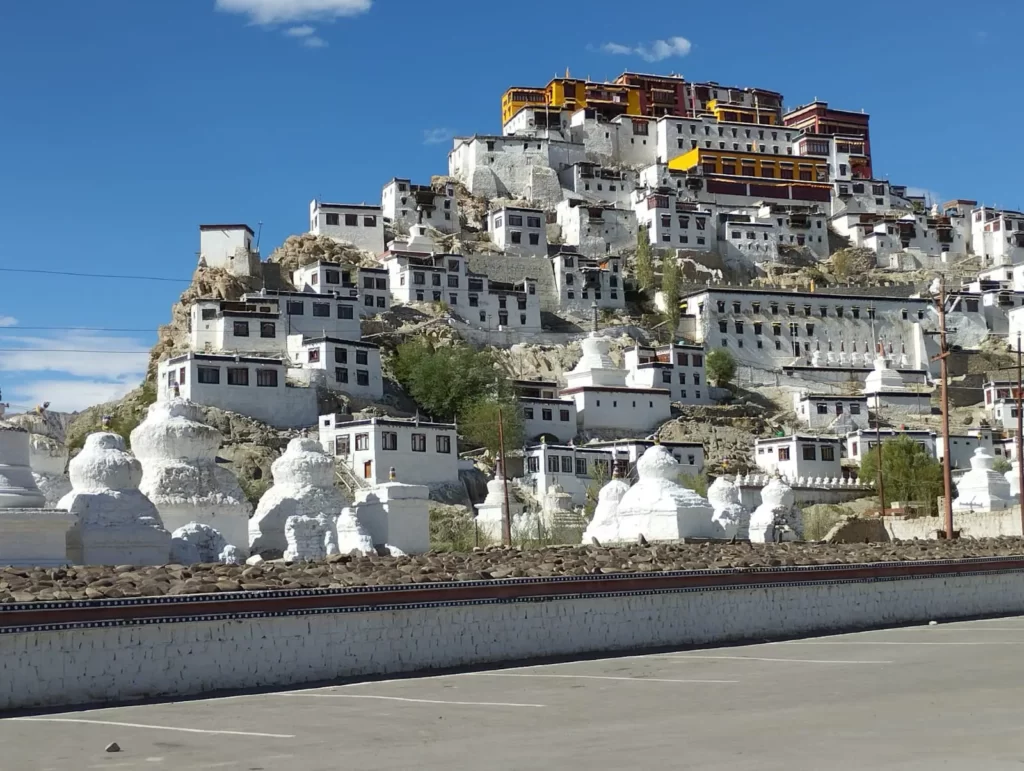
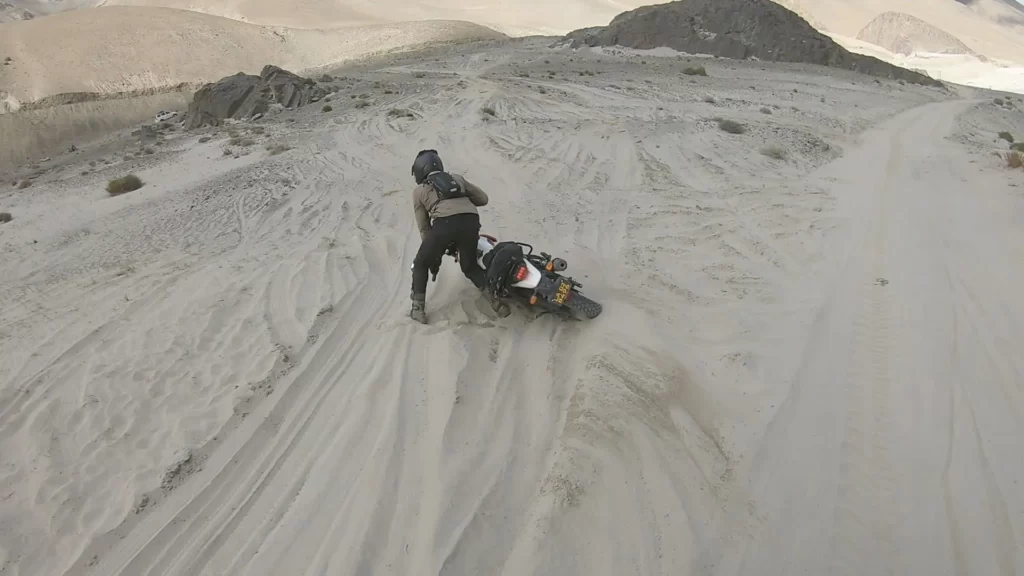
We all got back safely except for one broken toe and sprained ankle, hitting a protruding rock. We are now all trying to come down from this amazing two weeks.
If you’ve any inkling to do this trip, just book now, whether in a group or by yourself. Its only weakness is, what do you do next?
Roger McDonald
First published in Slipstream October 2022

